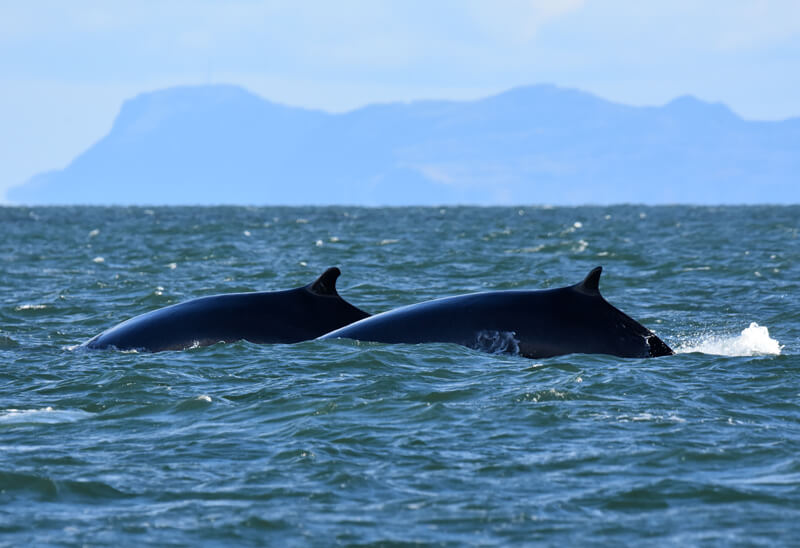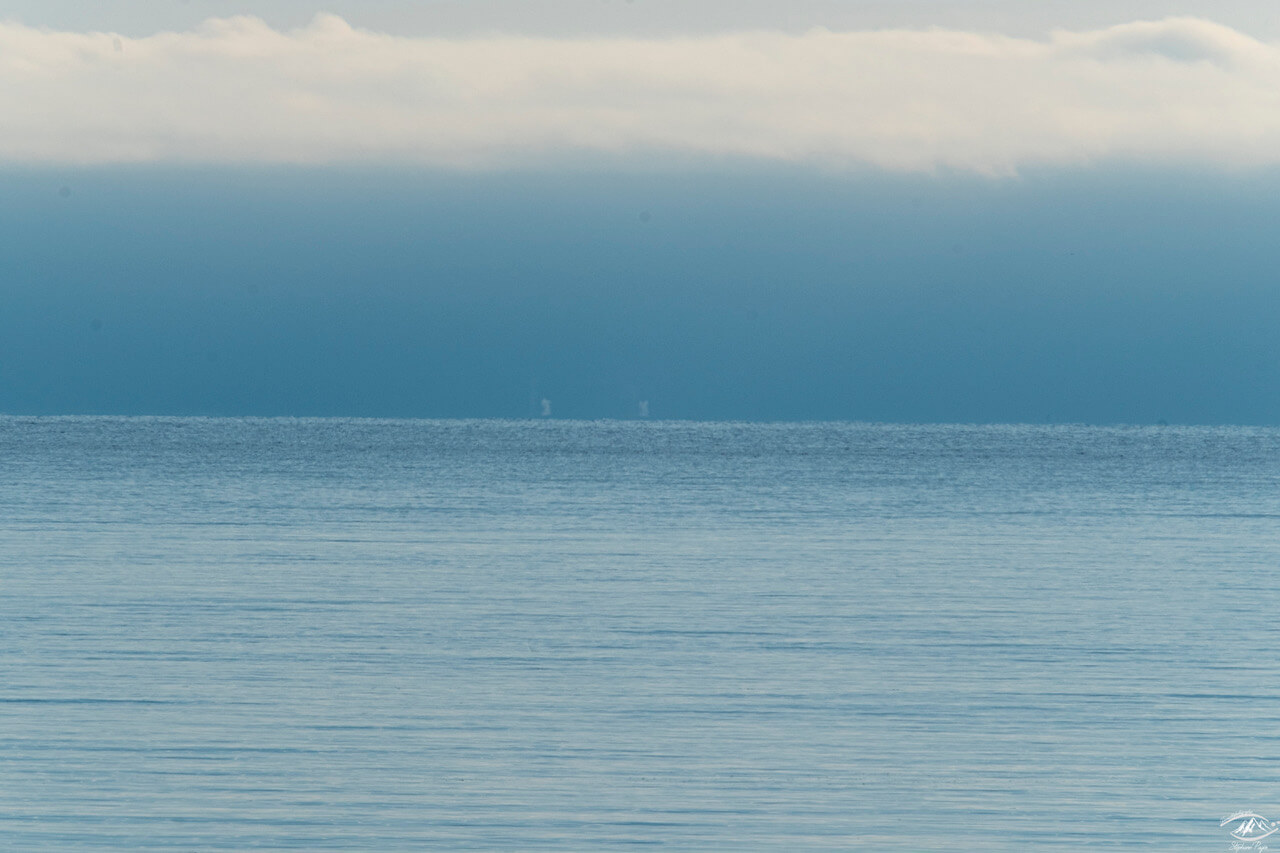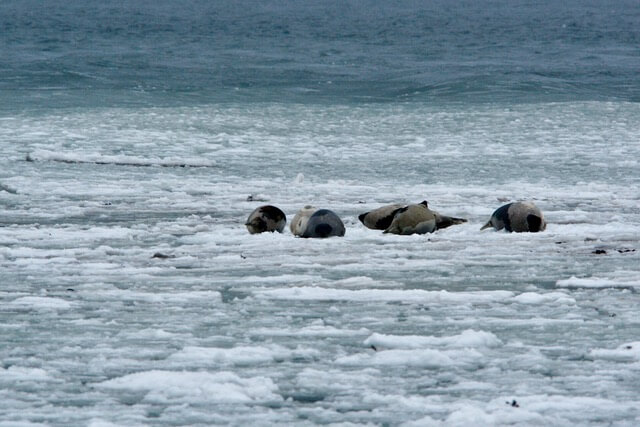One of the challenges of observing whales is the long dives that the animals take. The lives of whales take place underwater, well out of sight of human eyes. And sometimes their dives can be quite long…
Just ask Renaud Pintiaux, who scans the St. Lawrence waters from the rocks in Les Bergeronnes. On January 10, he waits four hours before he finally spots two large spouts far offshore. The whales exhale and inhale several times before disappearing for a good fifteen minutes. The two whales – probably blues – are making dives during which Renaud’s gaze scans the horizon to see where the animals will come up again.
Blue whales usually dive for 10 to 15 minutes, and sometimes even up to 30 minutes. Even though the majority of their dives are carried out within the first 100 m below the surface, blue whales can reach depths of up to 200 m where the seabed allows.
Luckily for Renaud, while the two enormous cetaceans are under water, a few belugas pass by, followed by several sizable herds of harp seals. Then a fin whale makes an appearance near the rocks. It seems to be heading toward Tadoussac before it arches its back and takes another plunge. Renaud decides to head to the outdoor recreation area in Les Bergeronnes, a few kilometres away, on the off-chance the fin whale will surface there. Nearly a half hour later, with camera in hand, Renaud waits patiently. Score! The whale emerges near the edge of the tidal flats.
Fin whales usually dive for shorter durations than blue whales, with average dive times of 5 to 15 minutes. However, this individual seems keen to test the records of its kind by resurfacing every 25 minutes! How do we know what we know about whales’ diving habits? Over the years, researchers have installed tags on the backs of cetaceans. These devices record various information such as speed, duration, and depth. By obtaining good samples in different regions, scientists are able to characterize the animals’ diving behaviour.
Off the coast of Sept-Îles on January 10, a tall, white column-shaped spout betrays the presence of a whale. On January 13, two columns appear side by side, meaning there are at least two individuals.
Hundreds of resting harp seals drift along on the ice. Observations are starting to come in from several places on both sides of the St. Lawrence, from Baie-des-Sables to Matane. Harp seals are every bit as interesting as whales. Even if their dives often last but a couple minutes, they are capable of staying under water for up to a half an hour!
In the Gaspé Bay area, many an observer has their eyes on the water, but reported sightings have become few and far between! Nevertheless, a resident of Cap-aux-Os working from home had the pleasure of being interrupted by two humpback whales. Excellent divers, humpbacks can hold their breath for up to 30 minutes, though their dives are more typically in the range of 8 to 15 minutes.
Minke whales can also stay under water for several minutes. While their dives usually last anywhere between 2 and 10 minutes, they can rival fin and blue whales by holding their breath for upward of 20 minutes! This is the case for a minke whale that has been lingering off the coast of Godbout since January 10. “It swims very close to the shore, surfaces a few times, then takes a extended dive,” notes one observer.
When viewing belugas, the challenge these days is not to mistake them with drifting chunks of ice. In Saint-Irénée, an observer is surprised when she sees a pair on January 7. While belugas move farther downstream in the St. Lawrence for the winter, they can on occasion be seen in the Charlevoix and Haute-Côte-Nord regions. On the morning of January 9, a small group of belugas is observed off the coast of Les Escoumins. Built for life in the Arctic, the belugas of the St. Lawrence seem to have a preference for waters with heavy ice cover, i.e. in the order of 70 to 90%. This is because ice acts as a buffer against the elements and therefore the force of increasingly frequent winter storms. Over the years, ice cover on the St. Lawrence has tended to grow thinner. The ramifications of this are not only impacting belugas: without the protection offered by the pack ice, many communities along the St. Lawrence are seeing their shores erode. Let’s not drag our feet any longer to see what the next consequences of ice loss will be! To reverse this worrisome trend, colossal efforts must be made to combat climate change.
Did you see any whales or seals this week? Don’t hesitate to share your sightings with us on Facebook or by email at [email protected]!







